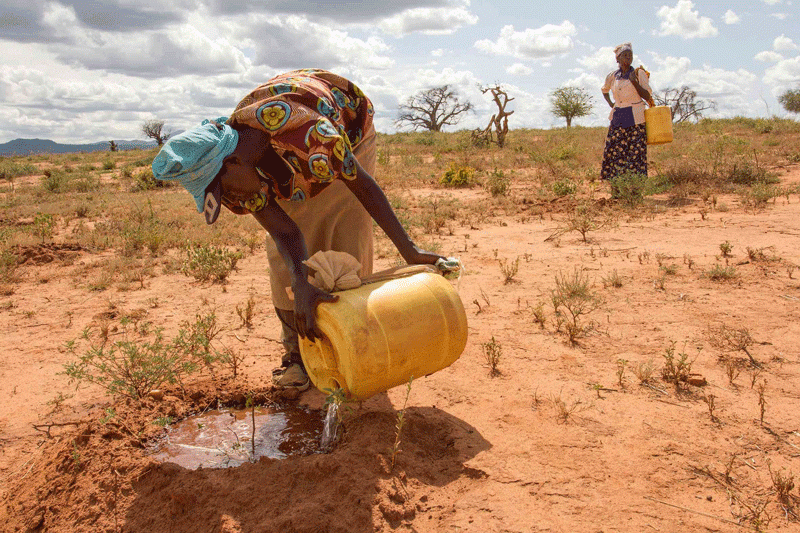
THERE is an unrecognised but vast ‘hidden middle’ of private sector businesses operating in Africa between agricultural producers and food consumers.
This is made up of a range of private actors providing transport, trading, brokerage, finance, storage, warehousing, processing and so on. This is neither ‘traditional’ (small, village based) nor ‘modern’ (organised, large-scale). These players facilitate medium-length value chains across a range of commodities that are in demand by (mostly) urban consumers, both in relation to inputs and marketed outputs of farm production. Studies show that this sector is under-recognised, but large and vibrant, and increasingly transforming agricultural value chains, generating value and employment across Africa.
Tom Reardon, lead author of the AGRA and IFAD reports that have highlighted this phenomenon so effectively, argued at a launch event: “The African food system is constrained…but we’ve found a quiet revolution at the grassroots level in African supply chains…. That is, in the segments that are closest to the farmer, made up of agro-dealers, truckers, processors, wholesalers and street vendors, among others. And it’s here, in the hidden middle, that rapid advancements are being made, with huge potential for growth.”
As the reports argue, “About 40% of non-farm employment is in “agri-food system” work, such as wholesale, logistics, processing, and retail. This means that about 25% of overall rural employment is in this work, making it crucial for rural families. It is especially important in peri-urban areas and in areas just beyond the peri-urban, the intermediate rural area, to women and youth.”
The role of ‘hidden middle’ entrepreneurs, connected in complex usually informal networks, is also vital for food security since around 80% of Africa’s food consumption is marketed and handled mostly through private operators. With the massive flow of often processed food to towns and cities (rising by 800% in 25 years across Africa) from diverse small-scale rural producers, there are many people involved. Unlike the assumptions of many policy proclamations, these reports argue that this is not a ‘broken’ value chain and there is no ‘missing middle’ to be filled by new interventions. Instead there is a vast, vibrant hidden middle, fostering a major transformation in food and farming systems across Africa.
While I am not convinced that the evolutionary schema offered by these reports — from traditional to transitional to modern is useful, as there are many pathways of change, the recognition of this area of activity and calls for its support are important. Much of this is informal, improvised and constantly adapting to changing circumstances. Although the reports parse these arrangements as (SME) small and medium-sized enterprises — I am again not sure about this nomenclature, as the ‘hidden middle’ is more complex and not easily categorised as a ‘sector’. While anathema to economic development planners, the multitude of small, networked, informal businesses linked to agriculture area reality across most of Africa, and in many ways more suited to current conditions than the costly ‘modern’ alternatives favoured by many.
Transformations in Zimbabwe following land reform
Although in particular ways, this is also happening in Zimbabwe. The transformation is driven by increased (localised) production from land reform and new connections to growing urban centres. In the past, Zimbabwe’s dualist agricultural sector meant that value chains were either short and very local (‘traditional’) or long and export oriented (‘modern’), linked respectively to communal areas and large-scale commercial farms.
- Open letter to President Mnangagwa
- Feature: ‘It’s worse right now than under Mugabe’: Sikhala pays the price of opposition in solitary cell
- Masvingo turns down fire tender deal
- Human-wildlife conflict drive African wild dogs to extinction
Keep Reading
Today, with a tripartite agrarian structure (small, medium and large-scale farms) and 175,000 new land reform farms, there has been an explosion of economic activity that has responded to the new land ownership and agricultural production scenario. This is the hidden middle, which is driving (as elsewhere in Africa) a ‘quiet’ revolution, involving many mostly private players connecting farm production to markets.
We have been investigating this phenomenon across our sites (Mvurwi, Gutu, Masvingo, Chikombedzi, Triangle, Matobo) across three different commodities (maize, horticulture and poultry). We have been tracing actors along value webs/networks/chains, assessing profit margins, looking at the collaborations and competition, evaluating employment generation across activities, tracing rural to urban links, especially to small towns in our study areas, as well as discussing the constraints faced. As the blogs in this short series show, these new value networks are generating profit, providing employment, increasing efficiency, and through investment generated by this growing activity, are (slowly) upgrading.











